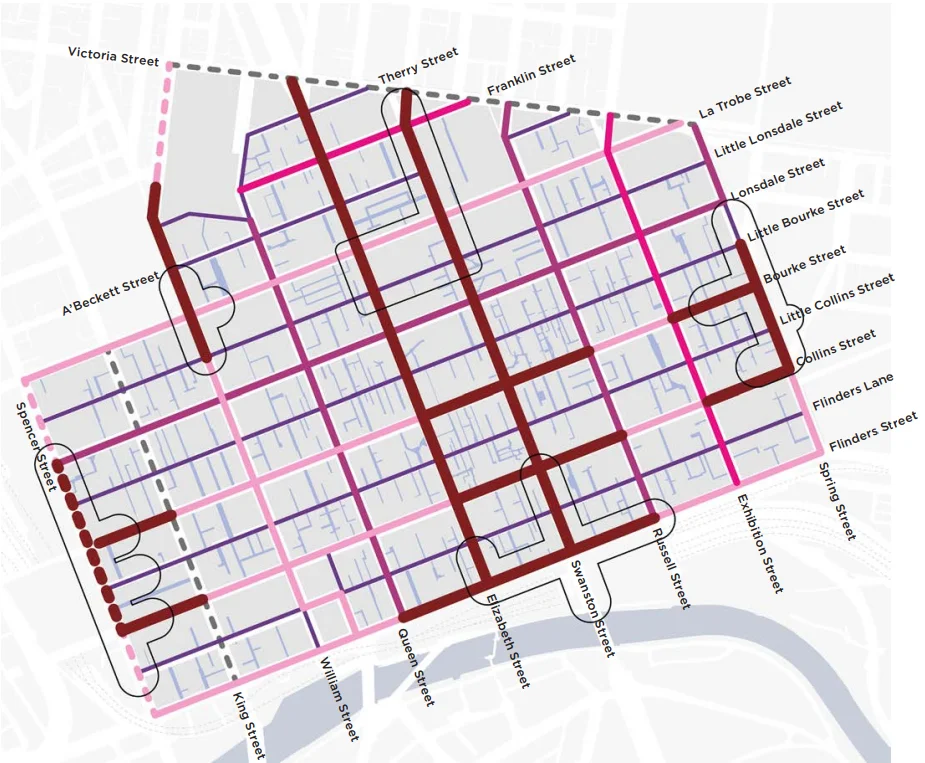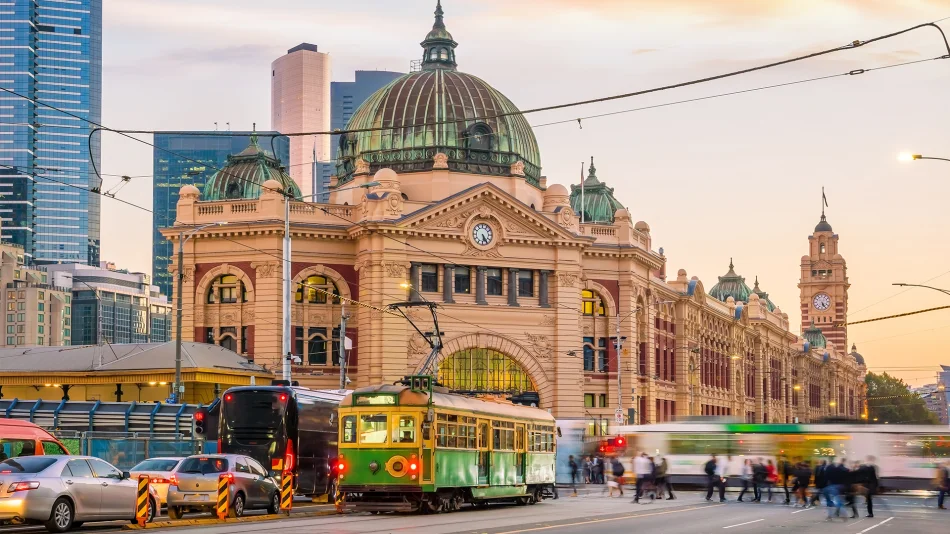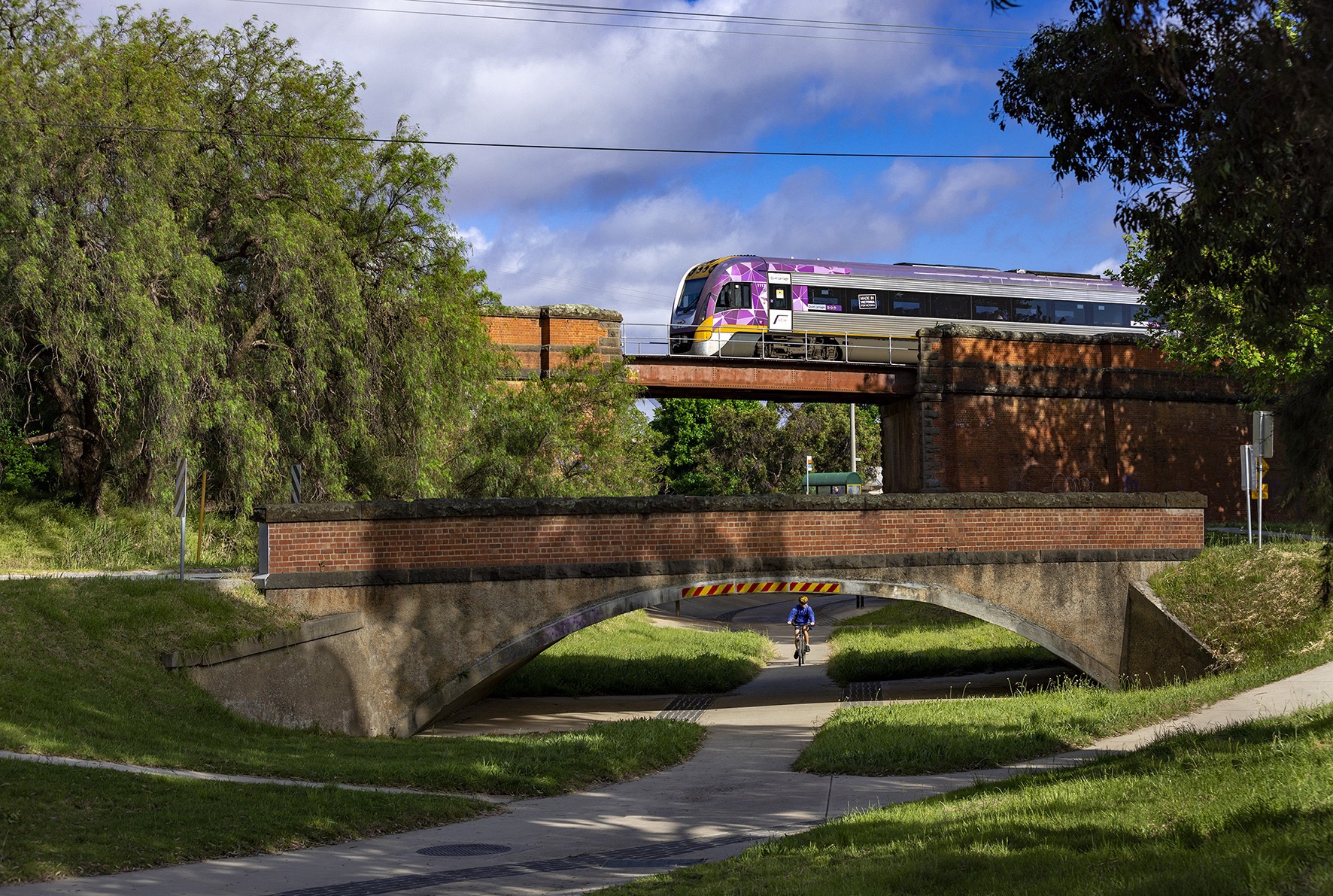The Framework seeks to allocate more space to walking and cycling in the Melbourne CBD and reduce central city through-traffic, aligning with the strategic directions of the Transport Strategy 2030.
The draft street plan categorises all CBD streets into one of: city streets with trams, city streets with buses, city streets with bikes, Little streets, and laneways.
The framework proposes blocking some streets in the grid to private vehicles between certain times each day and restricting car access to a single direction along others. Restrictions could apply on parts of Flinders, Collins, and Spring streets, along with the entire CBD section of Elizabeth and Swanston streets.


The Victorian Chamber responded to the submission following member feedback, including a roundtable of inner-city members in June 2023.
The submission states that Melbourne needs a comprehensive transport plan that considers access for cars, trucks, trams, pedestrians and bikes in the city with minimal delay and optimum safety.
“The Melbourne CBD comes to life when people from all across the city and state come in and that requires all modes of transport to be catered for,” Victorian Chamber Chief Executive Paul Guerra told the Herald Sun. “Planning should be done with practicality rather than with ideology.”
“We want to make sure that it’s safe for everybody and we want to make sure that it’s accessible for everybody.
“We want to work with the City to make sure that we have the design on transport access right and fit for a progressive city of Melbourne.”
The submission identifies deliveries into the city via road as a critical concern for the Chamber and its members.
The council can start by banning B Doubles in Melbourne Streets and also banning semi trailers in the CBD. This would be a wonderful start to the process. There are too many large trucks in the inner city more than you see in any other city I have visited.
Why does Vicroads think this is acceptable to have road trains on inner Melbourne streets? Like V/Line Vicroads has stopped listening to the concerns of the community and does whatever it likes outside of community standards.
There are no alternatives for some couriers and truck drivers in the city to make deliveries other than driving through the CBD. If it becomes too difficult to get through, it will start limiting the ability of businesses to trade and will have flow-on effects on consumers – and the city more broadly.
“If businesses can’t get deliveries in real time, it means they don’t have stock to sell,” Mr Guerra said.
“You’re going to have transport companies saying, ‘it takes me an extra hour to get in and out of the CBD, we’re going to make a mark-up on the transport cost on that’ and that puts more pressure on the CBD businesses.
“But you’ve also then got a customer that’s saying, ‘if it’s too hard to get into the Melbourne CBD and I can’t find a car park on the street, I’m actually not going to go there [and go elsewhere].’
“The risk becomes that businesses will end up with a smaller footprint or zero footprint in the CBD. Businesses will follow their customer base because money is mobile.”
While most roundtable participants for the submission support more active forms of movement across the CBD, they noted Melbourne’s cycle ways have not been delivered in a best-practice manner.
Take a look at the total shambles and disgrace the works in ARDEN STREET are producing with a safe wider road along a few kilometres being cut up and reduced to a single lane creating traffic congestion and making the rods LESS SAFE.
A lovely and safe wide road has also been reduced 40 km/h at the western end. if Melbourne continues to develop this way it will be quicker to walk between locations and drive.
There has been resounding feedback that the Exhibition Street bicycle lanes were installed both without consultation and seemingly overnight. The Victorian Chamber received overwhelmingly negative feedback on these lanes which now disrupt what was a major and strategic thoroughfare into and through the CBD.
In fact, the Independent Transport Review said “(The) Introduction of segregated bicycle lanes on routes such as Exhibition Street and Queens Bridge have reduced vehicle capacity and created congestion”.
Mr Guerra added: “Access for cyclists, for road users, for pedestrians should be there. But it needs to be done in a safe way, and a piece of green paint on the road doesn’t give adequate separation. It actually makes life more difficult for cyclists and for truck and car users as well, so we’ve got to rethink this.”
Consultation on Future Streets Framework 2030 and Beyond has now closed. A Final Future Streets Framework 2030 and Beyond is expected in early 2024.


